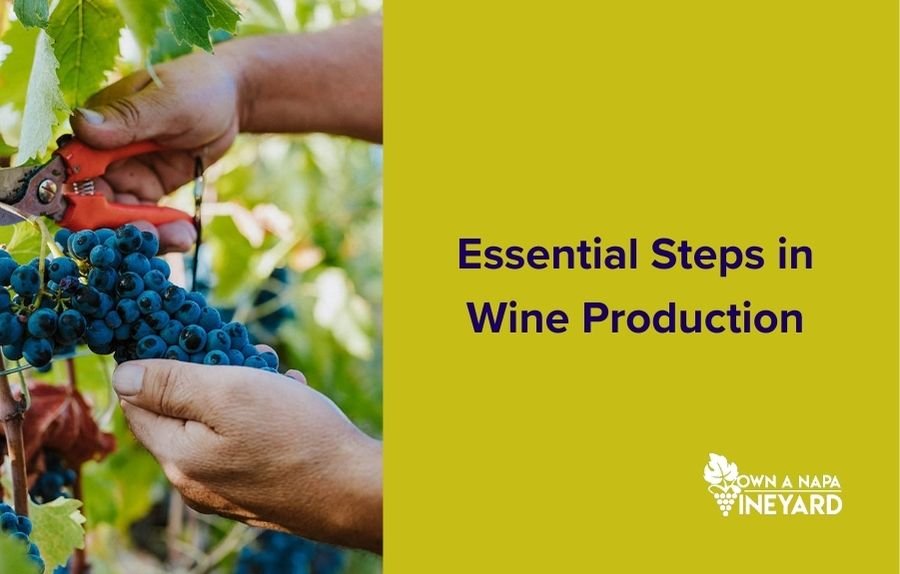Wine production is a complex and fascinating process that transforms grapes into the beloved beverage enjoyed worldwide. Understanding what are the six steps in wine production can provide insight into the art and science behind winemaking. This article will guide you through each step, from harvesting to bottling, ensuring a comprehensive understanding of how wine is made.
Harvesting the Grapes
The Importance of Timing
The first step in wine production is harvesting the grapes. Timing is crucial as the grapes must be picked at their peak ripeness to ensure the desired balance of sugar, acidity, and flavor.
- Manual harvesting: Hand-picking grapes allows for careful selection, minimizing damage.
- Mechanical harvesting: This method is faster and more efficient for larger vineyards, although it may be less selective.
Factors Influencing Harvest Time
Several factors influence the optimal harvest time:
- Grape variety: Different varieties ripen at different times.
- Climate and weather: Temperature and rainfall affect ripening.
- Winemaker’s goals: Desired wine style influences harvest decisions.
Crushing and Pressing
From Grapes to Must
Once harvested, the grapes are transported to the winery for crushing and pressing. This step extracts the juice from the grapes, creating “must,” which is a mixture of juice, skins, seeds, and stems.
- Crushing: Gently breaks the grape skins to release juice.
- Pressing: Separates the juice from the skins, seeds, and stems. White wines are usually pressed immediately, while red wines may ferment on the skins before pressing.
Equipment Used
Various equipment is used for crushing and pressing:
- Crusher-destemmer: Separates stems and crushes grapes simultaneously.
- Pneumatic press: Uses air pressure to gently press grapes, preserving delicate flavors.
Fermentation
Transforming Juice into Wine
Fermentation is the process where yeast converts the sugars in the grape juice into alcohol and carbon dioxide, transforming the must into wine.
- Alcoholic fermentation: Can occur naturally with wild yeast or be initiated with cultured yeast.
- Temperature control: Essential for managing fermentation speed and preserving desired flavors.
Red vs. White Wine Fermentation
The fermentation process varies between red and white wines:
- Red wine: Ferments with grape skins, seeds, and stems to extract color and tannins.
- White wine: Ferments without skins, focusing on preserving fresh, fruity flavors.
Clarification
Removing Solids
After fermentation, the wine undergoes clarification to remove suspended solids, such as dead yeast cells, proteins, and other particulates.
- Racking: Transferring wine from one vessel to another, leaving sediments behind.
- Fining: Adding substances that bind to particles, making them easier to remove.
- Filtration: Passing wine through filters to remove remaining solids.
Methods of Clarification
Different methods are used based on the desired clarity and style of the wine:
- Gravity settling: Allows solids to settle naturally over time.
- Centrifugation: Uses centrifugal force to separate solids quickly.
Aging and Maturation
Developing Flavors
Aging allows the wine to develop complex flavors and aromas. This step can take place in various vessels, each imparting different characteristics to the wine.
- Oak barrels: Add flavors like vanilla, spice, and toast, and allow for slow oxygenation.
- Stainless steel tanks: Preserve fresh, fruity characteristics without adding flavors.
Duration of Aging
The aging duration varies depending on the wine type and desired style:
- Red wines: Often aged longer to develop deeper complexity.
- White wines: Generally aged for shorter periods to maintain freshness.
Bottling
Preparing for Market
The final step in wine production is bottling, where the wine is transferred into bottles for distribution and sale.
- Stabilization: Ensures the wine remains clear and stable in the bottle.
- Bottling line: Involves filling, corking, and labeling the bottles.
Considerations for Bottling
Several factors are considered during bottling:
- Oxygen management: Minimizing exposure to oxygen to preserve wine quality.
- Closure type: Choosing between cork, screw cap, or synthetic closures based on the wine style and market preferences.
Conclusion
Understanding what are the six steps in wine production highlights the intricate process of transforming grapes into a refined beverage. From harvesting and crushing to fermentation, clarification, aging, and bottling, each step plays a crucial role in developing the wine’s character and quality. For those interested in exploring the world of winemaking or owning a vineyard, contact Own A Napa Vineyard. Our experts can guide you through the exciting journey of wine production and vineyard ownership. Call us today to learn more and start your winemaking adventure!





